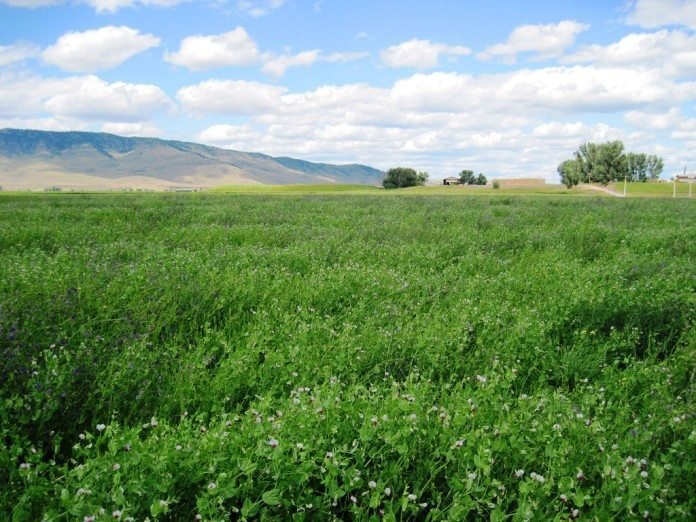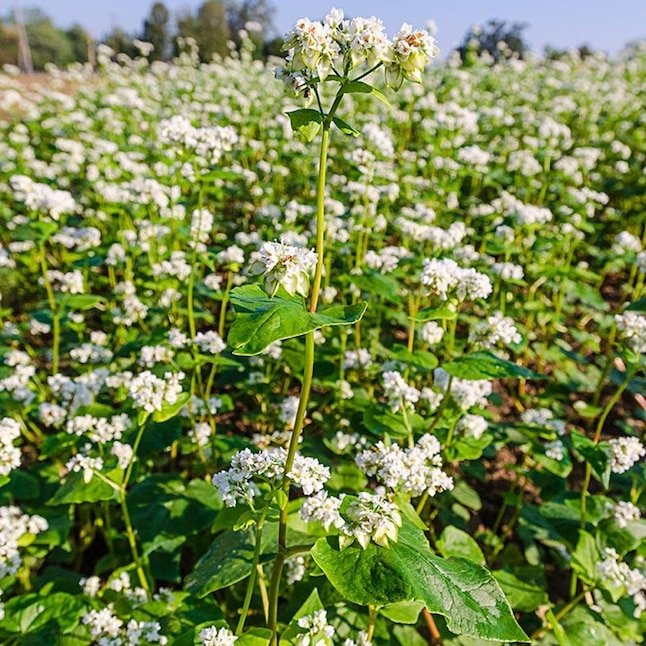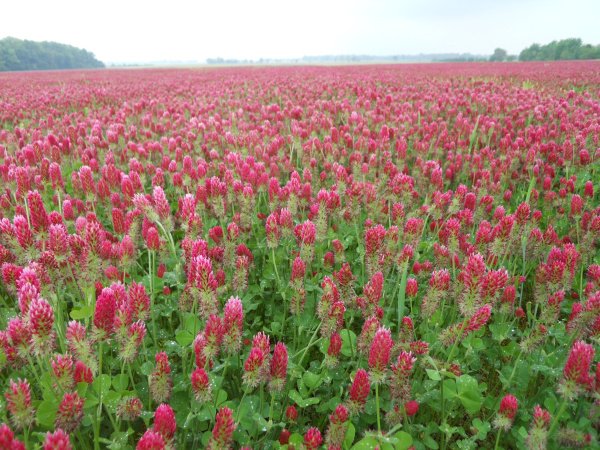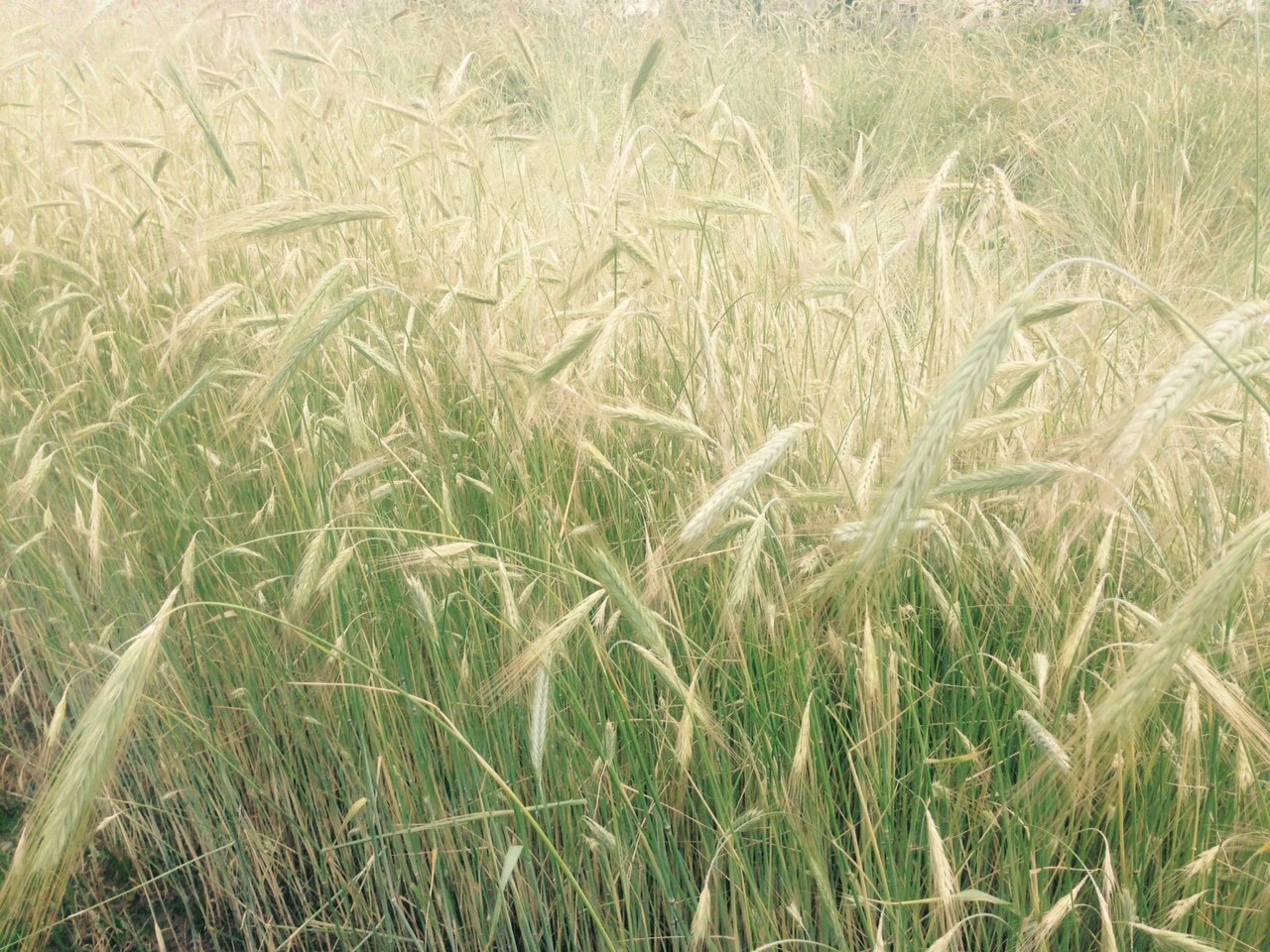How To Use Garden Cover Crops And Why You Definitely Should!
When the summer garden has ended, or you have harvested the last of the fall crops, you may find yourself with a few empty garden beds.
Is there anything you should or could do to your garden beds for the dormant months? Yes! It's called garden cover crops!
Every year around early fall, when gardening season is slowing down, we have a few open beds that need some "rest ." As we do not till our garden beds, we turn to other methods, like cover crops and crop rotation, to restore the soil without disturbing the ecosystem.
Scroll down to learn more about cover crops, their purpose, and the best garden cover crops to use!
What Are Garden Cover Crops?
Cover crops are fast-growing plants - mostly legumes and grasses - planted in late summer or fall. They can be used in small gardens to large open fields.
Leaving your beds bare can lead to weed infestation, loss of nutrients, and soil erosion. For this reason, cover crops act like a thick bed of mulch that protects the soil during cold months and puts back essential nutrients into the soil.
The following spring, you will turn in the dead plant material from the cover crops and plant new vegetables or flowers in the improved bed.
You get two types of cover crops:
Winter-killed cover crops: These crops get killed by extreme cold and several hard frosts. Although they will die, the mulch and root mass will hold the soil in place until the following spring.
The only drawback is winter-killed cover crops need to be sown in summer to grow and get significant biomass for the winter. The biggest advantage of winter-killed cover crops is that the mulch is easy to till under.
Winter-hardy crops: These crops can grow through winter or go dormant when temperatures reach a certain threshold, then renew growth in late winter/ early summer. Plant winter-hardy crops after the summer vegetable crops died and let them grow through fall. The drawback is that winter-hardy crops can be harder to till over in the soil due to their deep roots.
Benefits Of Garden Cover Crops
Some of the main benefits of planting cover crops include:
Improve overall soil health and fertility and add essential organic matter.
Fix the nitrogen in the soil, which is crucial for healthy plants.
You will increase the activity of earthworms and microorganisms that benefit the soil.
The water, root, and air penetration of the soil will improve.
It will help to suppress cool-season weeds.
It will prevent soil erosion - keeping soil from blowing or washing away.
You will create optimal conditions for spring planting.
You will provide habitat and food (nectar, pollen) for beneficial insects and late-season pollinators.
When Do You Plant Cover Crops?
In most zones, it's best to plant right after your last harvest and when you know you won't be growing something soon in that bed. For many, this is usually between August and September.
The cover crops need at least 4 weeks to establish themselves before the first fall frost.
It helps to determine how long your cover crop will take to mature, from when you planted it to when you kill it (right before it sets seeds). You want to get the maximum benefit before it starts making seeds.
Plants That Are Best For Garden Cover Crops
There are various cover crops to choose from, but it will depend on a few factors:
Your growing zone.
If you choose winter-killed or winter-hardy cover crops. And this will depend on when you plant the crops - after the last summer or fall harvest.
If you want cover crops for a short period, like between spring and summer plantings, or an extended period like winter.
And the category of cover crop.
Cover crops can be divided into three categories that each offer specific benefits and challenges:
Grains such as annual grasses, wheat, oats, and rye will build biomass and loosen up soil compaction with their deep and extensive roots. Their leaves also improve water infiltration by slowing down water movement from rain or irrigation.
Legumes such as clover, peas, soybeans, and vetch are excellent nitrogen fixers.
Broadleaves such as mustard, buckwheat, oilseed radish, and alyssum germinate quickly to kill undesirables like weeds. They are also easy to turn into the soil.
When you want to use a cover crop for an extended period, it may be better to use a mix of grains and legumes. Winter wheat, clovers, and Austrian peas are better for long winter months.
And for shorter periods, legumes and broadleaves would be better. Cover crops like cowpeas, soybeans, buckwheat, and sorghum-sudangrass hybrids are better for spring and summer.
Below are some of the most common cover crops used:
We like to use crimson clover, mammoth red clover, and winter rye.
AUSTRIAN PEAS
Austrian peas are winter-killed legumes that can be used as cover crops in summer and winter. They can survive winter if temps don't drop too low. They are drought-tolerant, nitrogen fixers, fast-growing, and provide biomass.
BUCKWHEAT
Buckwheat is a grain that is best used for summer covering. It attracts pollinators, suppresses weeds, and scavenges phosphorus in the soil.
CRIMSON CLOVER
Crimson clover is probably one of the prettiest cover crops. They can be planted anytime during the growing season, but they work well for winter cover. They grow rapidly during cool weather, have a high shade tolerance and great reseeding potential. This annual legume puts back nitrogen in the soil, helps with weed suppression, decreases soil erosion, and attracts pollinators. Planting crimson with a grass cover crop can help prevent some winter kill.
FIELD PEAS
Peas are quick growers in spring and early fall and are winter-killed crops. They put nitrogen back in the soil and attract beneficial insects. Pea seeds should be inoculated with microbial dust.
HAIRY VETCH
Hairy vetch is a winter-killed (in some areas, it can survive winter) cover crop that should be sowed early to late summer. It makes a good weed suppressant, fixes nitrogen, and scavenges phosphorus. Hairy vetch produces a lot of top growth, making it difficult to turn over without a strong mower. Hairy vetch is mainly used for field-scale production.
OATS
You can sow oats in spring or fall, and when sown in summer, they will grow actively into November. It will die after several hard frosts, but the root system will hold the soil in place. Oats are good scavengers of phosphorus and add soil nutrients that help to restore soil fertility. It also loosens compact soil and prevents erosion.
RED CLOVER
Red clover can be planted in early spring if you don't get around to planting a cover crop at the end of summer. Red clover is very resilient - you can seed it onto frozen ground, and it will survive constant cold temperatures.
WINTER RYE
Winter rye is an important winter-hardy cover crop as it helps to suppress weeds and inhibits weed germination. Winter rye is often used as the last crop of the growing season, planted around the first frost date. It germinates best in cool soil when temperatures drop to 35°F. It is also a great nitrogen scavenger, biomass provider, and discourages overwintering pests.
Mustard, barley, berseem clover, and oilseed radish are other annual cover crop alternatives that will fix nitrogen, alleviate compaction, and improve soil fertility.
When To Kill A Cover Crop
The plants store nutrients until they set flowers when it is at the peak of all the benefits you desire. So the ideal time to kill a cover crop is after flowering but before it sets seeds.
Worried that cover crops will grow weeds in your beds? No need to! As long as you cut them down before they set seeds, you are okay.
Cut the cover crop into small pieces until the surface is reached, then turn the plant material and roots into the soil as soon as possible to take advantage of all the nutrients. When plants have a lot of top growth, mow the tops first and then turn into the soil.
Allow 2-4 weeks for the breakdown process before you sow any edible crops.
I hope this information has been helpful to you! Cover crops are things that kind of need a bit of trial and error and are dependent on a few factors.
My advice would be to choose one cover crop more or less suitable to your needs and test out what works best for you. It might take you a few growing seasons, but that’s what gardening is all about! Learning and growing as you go!
Love, Annette xx








